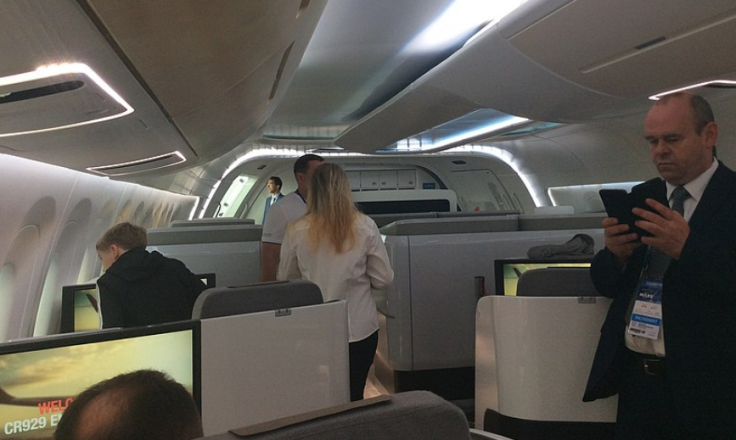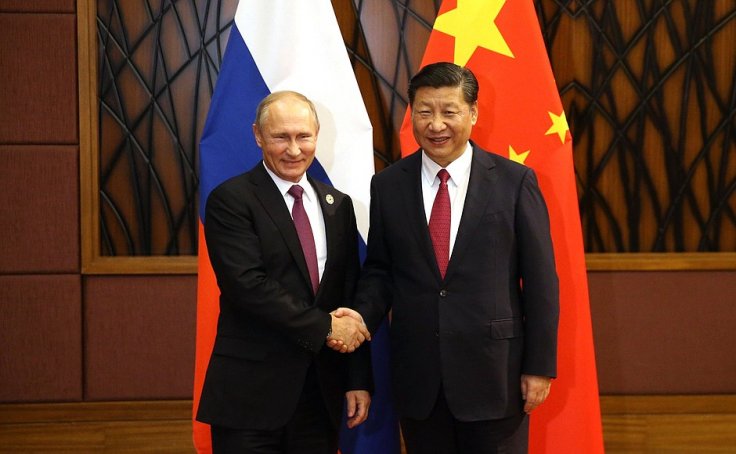A $50 billion joint venture between Russia and China to manufacture a new passenger jet is at the risk of falling apart, according to reports. The project code-named CR-929 was launched in 2017 as Moscow and Beijing joined hands to end the western dominance in the manufacture of passenger aircraft.
The long-range, 280-seat airliner is being developed by the Shanghai-based Commercial Aircraft Corporation of China and Russia's United Aircraft Corporation. The signing of the MoU between the companies in 2016 was attended by Russian President Vladimir Putin and Chinese President Xi Jinping.
Increasing Differences
However, differences cropped up even as the project went ahead and mock-up versions were presented in air shows around the world.

"One of the key reasons is that Beijing hopes the CR-929 passengerjet will meet Western airworthiness standards. The wide-bodied jet is designed to fly to the United States and Europe, so it would be better to choose some key components by sharing some orders with European and American manufacturers," a source familiar with the situation told the South China Morning Post.
While Russia wants the project to be completed without any western cooperation, China is clear that it needs commercial success for the project. China wants to source an American or German undercarriage for the plane, Russia wants to use its own.
"The Russia side regards Beijing's choice to use Western components as showing a white flag to the West amid global sanctions following Russia's invasion of Ukraine," the source told SCMP.
Profit Sharing
In early June, Russian Vice-Premier Yuri Borisov had suggested that the project was not going in the right direction.
"We are working with China on this project which, in principle, is not going in the direction that suits us. China, as it becomes an industrial giant, is less and less interested in our services," Borisov, who oversees the country's aviation industry had said, according to Russian news agency TASS.

"We have our design bureau and vast experience in TsAGI (Central Aerohydrodynamic Institute). But the Chinese have more needs than we have today. Our participation is decreasing and decreasing. I don't want to predict the future of this project, if we are going to leave it or not, but for now this is really the way," the Russian official had added.
His comments came two months after China's Ambassador to Russia, Zhang Hanhui, said both the sides had papered over differences. "Creation of the CR929 widebody long-range airplane is one of the critical joint projects of our countries. The parties for the time have already reached a consensus on key issues like investments, design, and labor division on completion of research and development. Joint studies and developments are progressing smoothly and sustainably," Zhang had said.
Latest Roadblock
The latest report from the SCMP suggests that the differences between the two sides are too complex to be solved. The biggest issue currently is the question of profit sharing. China has proposed a profit sharing plan under which it is entitled for the profits from the Chinese market entirely. The profits from the rest of the world will be shared 70-30 basis, with the larger share going to Russia.

However, Moscow feels that the bulk of the profits for the project will come from China and it will be hard to sell a large number of planes in the rest of the world in the face of still competition from Airbus and Boeing.
"It's predicted that the Chinese market alone will require more than 3,000 widebody aircraft in the future, ensuring Boeing and Airbus's current market shares remain unchanged ... Moscow realised that outside China, it's very hard for the CR929 to grab potential customers from competitors like Boeing and Airbus," a source told SCMP.








